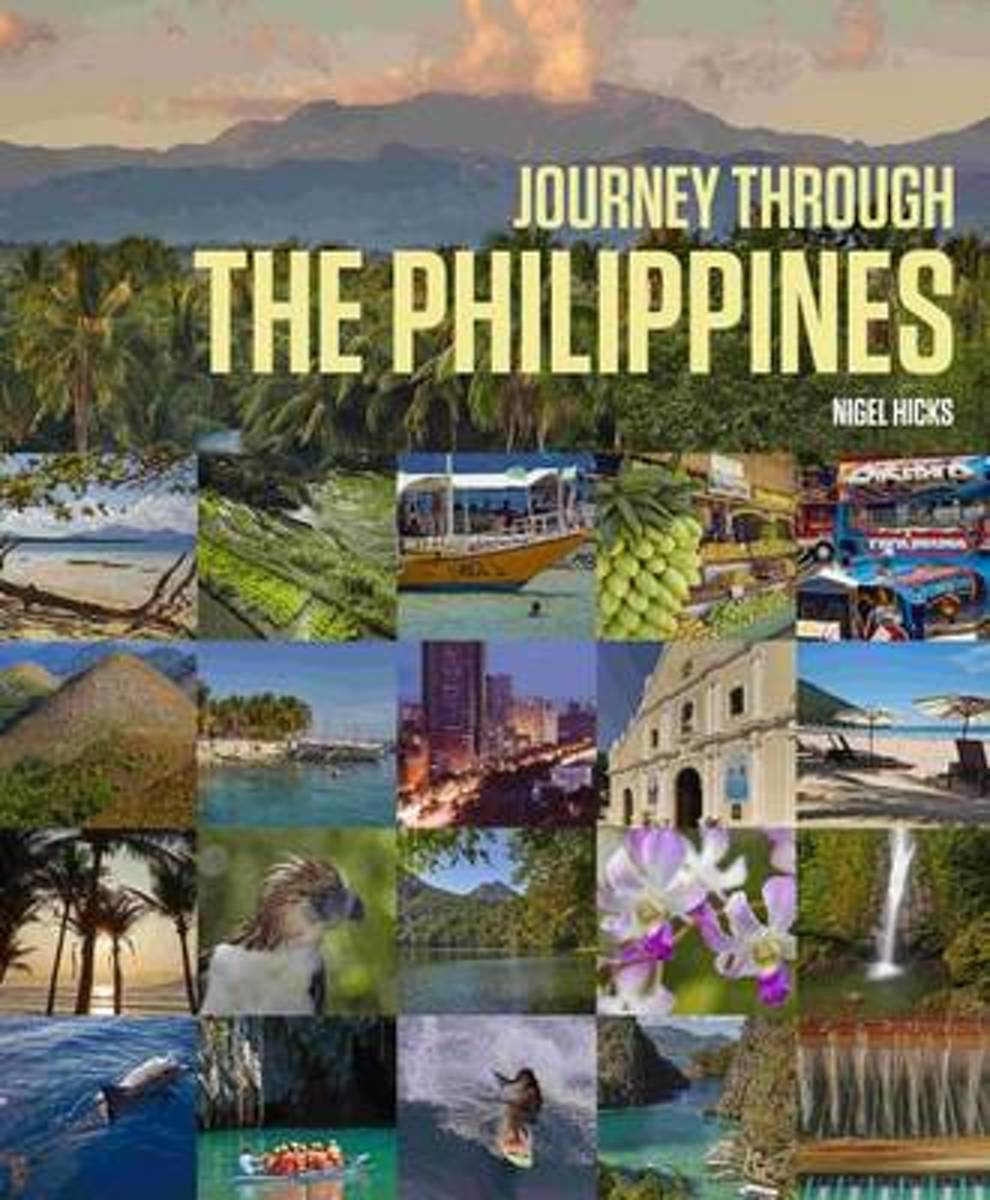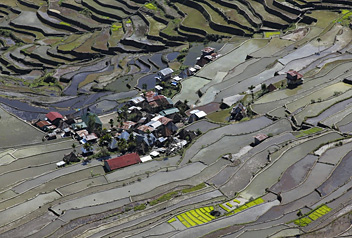Philippines
Description
Located between Taiwan in the north and Borneo in the southwest, the tropical island nation of the Philippines marks the eastern edge of Southeast Asia, and consists of over 7000 mostly mountainous islands of volcanic origin. There are several major active volcanoes scattered across the archipelago, such as Mount Pinatubo, Mount Mayon, Mount Canlaon, Mount Ragang and Taal Volcano. Climate in the Philippines is hot and humid with frequent (about 20 per year) typhoons, especially during the summer monsoon which lasts from April till October. As a result the islands are all lush and green, and the remote mountain areas are covered in tropical rainforest, and pine forests and grasslands higher up.
Hiking, trekking and climbing are a popular passtime in the Philippines, especially among students, and the number of local mountaineering and outdoor clubs scattered across the Philippines is astounding.
Top region for hiking and trekking, and accessible by road from Manila, are the Cordillera mountain range in the north of Luzon island. Here you can climb trails and traverses to some of the highest mountains in the Philippines, such as Mt. Pulag, Mt. Timbak and Mt. Tabayoc. The Cordilleras are also home to a variety of indigenous hill tribes which you are sure to meet when trekking. Most famous are the Ifugao and their rice terraces, but there are many other tribes like Ibaloi and Kankaney.
A bit further east on Luzon are the Sierra Madre mountain range and Cagayan Valley, which appear to be largely unexplored by hikers. At the far southern end of the Sierra Madre range, in the region of Tagalog, is the Quezon National Forest Park. It is popular as a weekend break from Manila, with trails to caves and waterfalls. If you are in for volcanic landscapes, go hiking in Central Luzon and particularly to the crater of the recently (1991) erupted Mount Pinatubo. Or venture out to the region of Bicol in the far southeast of Luzon, to follow trails through tropical rainforests up the beautiful Mayon and Isarog volcanoes, and the restless Bulusan volcano.
Traveling south from Luzon are a group of islands called the Visayas, which form the central part of the Philippines. There are some truly challenging mountain hikes on the islands of Negros and Panay, countryside hikes on Leyte, and treks through the forests of Biliran.
Last but not least there is the large and mountainous southern island of Mindanao, home to the highest mountain in the Philippines: Mount Apo (2954 m). In spite of the somewhat instable political situation in some parts of Mindanao, it is a popular climbing destination. There are several hiking trails leading up Mount Apo, which is a sacred ancestral abode for a variety of indigenous tribes. Other mountain ranges on Mindanao include Kitanglad in the north, with its pristine tropical forests and some of the highest mountains in the Philippines. Mount Candalaga (2402 m) and Mount Pandadagsaan (2670 m) in the Davao region, offering some pretty challenging climbs from Compostela Valley. Or the remote Mount Hamiguitan on the southeastern tip of Mindanao, with its unique pygmy forest.
When hiking in the mountains of the Philippines it is common, and in some cases compulsory, to register before setting off, and to hire a local guide. Particularly on Mindanao. Check-out the wonderful website of Pinoy Mountaineer (see below).
Régions
Montagnes
Liens
Données
Rapports
Guides et cartes
Hébergement
Organisations
Voyagistes
GPS
Autre
Livres

Netherlands
- The Secret Art of Derobio Escrima
- In The Secret Art of Derobio Escrima Grandmaster Dan Medina will take you on a journey into the lives and history of two of Leyte's Legendary Men. One was considered to be one of the Philippines most dangerous rebels, a leader of the Pulahan Movement who later became a patriot, General Faustino Ablen (aka Papa Ablen). The other was his... Lire la suite
- Also available from:
- Bol.com, Belgium

Belgium
- The Secret Art of Derobio Escrima
- In The Secret Art of Derobio Escrima Grandmaster Dan Medina will take you on a journey into the lives and history of two of Leyte's Legendary Men. One was considered to be one of the Philippines most dangerous rebels, a leader of the Pulahan Movement who later became a patriot, General Faustino Ablen (aka Papa Ablen). The other was his... Lire la suite

Netherlands
2014
- Insight Guides
- Southeast Asia is a firm favorite on the long-haul travel trail, thanks to its unrivaled range of amazing experiences and unforgettable sights – from the northern hills of Thailand to the dragons of Komodo, frenetic Manila to laid-back Vientiane, the sands of Ko Samui to Balinese temples and the ruins of Angkor. And traveling around the region... Lire la suite
- Also available from:
- Bol.com, Belgium

Belgium
2014
- Insight Guides
- Southeast Asia is a firm favorite on the long-haul travel trail, thanks to its unrivaled range of amazing experiences and unforgettable sights – from the northern hills of Thailand to the dragons of Komodo, frenetic Manila to laid-back Vientiane, the sands of Ko Samui to Balinese temples and the ruins of Angkor. And traveling around the region... Lire la suite
Netherlands
- Backpacker Business
- Written on chicken buses, trains, boats and in beach bars all across Southeast Asia, this is the story of how a 23-year old English backpacker set up the first print magazine for independent travellers in Southeast Asia.From inexperienced backpacker in Nepal to established publisher in Thailand, via business deals in Cambodia, Vietnam, Laos,... Lire la suite
- Also available from:
- Bol.com, Belgium
Belgium
- Backpacker Business
- Written on chicken buses, trains, boats and in beach bars all across Southeast Asia, this is the story of how a 23-year old English backpacker set up the first print magazine for independent travellers in Southeast Asia.From inexperienced backpacker in Nepal to established publisher in Thailand, via business deals in Cambodia, Vietnam, Laos,... Lire la suite

Netherlands
2018
- Reisgids - Natuurgids Blue Sky Travel guide the Philippines - Filipijnen | John Beaufoy
- A new series of pocket-sized travel guides aimed at first-time travellers featuring an extended introduction to the natural history of the destination. In three parts, the first section describes the major highlights. The second section looks at the significant locations with information for each on plants and animals, cultural sites,... Lire la suite

Netherlands
- Journey Through the Philippines
- The sheer size of the Philippines (it has over 7,000 islands) and its amazing diversity, with environments that range from stunning submarine coral reefs to rugged and overly-active volcanoes, with beaches, lakes, rivers and forests in between, plus lively modern cities with heritage Spanish buildings, make it a challenge for the visitor to... Lire la suite
- Also available from:
- Bol.com, Belgium

Belgium
- Journey Through the Philippines
- The sheer size of the Philippines (it has over 7,000 islands) and its amazing diversity, with environments that range from stunning submarine coral reefs to rugged and overly-active volcanoes, with beaches, lakes, rivers and forests in between, plus lively modern cities with heritage Spanish buildings, make it a challenge for the visitor to... Lire la suite

Netherlands
- The National Parks and Other Wild Places of the Philippines
- The National Parks and Other Wild Places of The Philippines is a prestigious souvenir for visitors to the Philippines, and a stunning introduction to the wildlife and landscapes of this extraordinary country. From multi-coloured reefs teeming with fish and corals, to smouldering volcanoes and dense rainforest harbouring many endemic animals and... Lire la suite
- Also available from:
- Bol.com, Belgium

Belgium
- The National Parks and Other Wild Places of the Philippines
- The National Parks and Other Wild Places of The Philippines is a prestigious souvenir for visitors to the Philippines, and a stunning introduction to the wildlife and landscapes of this extraordinary country. From multi-coloured reefs teeming with fish and corals, to smouldering volcanoes and dense rainforest harbouring many endemic animals and... Lire la suite

Netherlands
2017
- Reisgids Culture Shock! Philippines | Marshall Cavendish
- CultureShock! Philippines is a survival guide for anyone living, working or wanting to discover life in the Philippines. Settling into a foreign land is never easy, but with this book you will learn to understand the importance of amor-propio, appreciate the Filipino ways and learn about the history and culture of this diverse country. Find out... Lire la suite

Netherlands
- Following The Sunrise - A Century Of Baptist Missions, 1813-1913
- FOLLOWING THE SUNRISE A Century of Baptist Missions, 1813-1913 By HELEN BARRETT MONTGOMERY Author of Christus Redemptor M and Western Women in Eastern Lands I am the Light oi the World. He that foiloweth me shall not walk in darkness, but shall have the light of life. 41 The people that walked in darkness have seen a great light, Published in... Lire la suite
- Also available from:
- Bol.com, Belgium

Belgium
- Following The Sunrise - A Century Of Baptist Missions, 1813-1913
- FOLLOWING THE SUNRISE A Century of Baptist Missions, 1813-1913 By HELEN BARRETT MONTGOMERY Author of Christus Redemptor M and Western Women in Eastern Lands I am the Light oi the World. He that foiloweth me shall not walk in darkness, but shall have the light of life. 41 The people that walked in darkness have seen a great light, Published in... Lire la suite

Netherlands
2018
- Insight Guides Philippines
- Insight Guide Philippines is a comprehensive, full-colour travel guide that provides an essential introduction to this little-known Asian country. The Philippines is a destination of thousands of islands fringed by idyllic tropical beaches, plus stunning mountain scenery, colonial architecture and lively festivals.The Insight Guide will assist... Lire la suite
- Also available from:
- Bol.com, Belgium

Belgium
2018
- Insight Guides Philippines
- Insight Guide Philippines is a comprehensive, full-colour travel guide that provides an essential introduction to this little-known Asian country. The Philippines is a destination of thousands of islands fringed by idyllic tropical beaches, plus stunning mountain scenery, colonial architecture and lively festivals.The Insight Guide will assist... Lire la suite
Netherlands
- Why Travel Solo ?
- <b>WHY TRAVEL SOLO?</b></p><em><b>The twelve ways traveling solo changes your personality and transforms your life</b></em></p>Do you want to have new experiences, meet new friends, gain confidence? Do it safely, comfortably, uniquely? Then this is the book for you.</p><h2>UNLOCK YOUR... Lire la suite
- Also available from:
- Bol.com, Belgium
Belgium
- Why Travel Solo ?
- <b>WHY TRAVEL SOLO?</b></p><em><b>The twelve ways traveling solo changes your personality and transforms your life</b></em></p>Do you want to have new experiences, meet new friends, gain confidence? Do it safely, comfortably, uniquely? Then this is the book for you.</p><h2>UNLOCK YOUR... Lire la suite

Netherlands
- The Secret Art of Derobio Escrima
- In The Secret Art of Derobio Escrima Grandmaster Dan Medina will take you on a journey into the lives and history of two of Leyte's Legendary Men. One was considered to be one of the Philippines most dangerous rebels, a leader of the Pulahan Movement and later a patriot. General Faustino Ablen (aka Papa Ablen). The other was his disciple,... Lire la suite
- Also available from:
- Bol.com, Belgium

Belgium
- The Secret Art of Derobio Escrima
- In The Secret Art of Derobio Escrima Grandmaster Dan Medina will take you on a journey into the lives and history of two of Leyte's Legendary Men. One was considered to be one of the Philippines most dangerous rebels, a leader of the Pulahan Movement and later a patriot. General Faustino Ablen (aka Papa Ablen). The other was his disciple,... Lire la suite
Cartes

United Kingdom
- Philippines SUPERSEDED
- This specialist country map covers Philippines to a scale of 1:2 Million. It also includes detailed maps of Baguio Region at 1:400,000, Cebu Region at 1:650,000, Manila District at 1:750,000 and Philippines at a scale of 1:2 Million. City plans for Baguio City and Cebu City are shown at a scale of 1:17,500, Davao City has a scale of 1:20,000... Lire la suite

Netherlands
- Wegenkaart - landkaart Southeast Asia - Zuidoost Azië | Nelles Verlag
- Nelles Map Southeast Asia 1 : 4 500 000 ab 9.9 EURO Thailand - Laos - Cambodia - Vietnam - Malaysia - Singapore - Brunei - Indonesia - East Timor - Philippines - Taiwan Nelles Map. new edition Lire la suite









